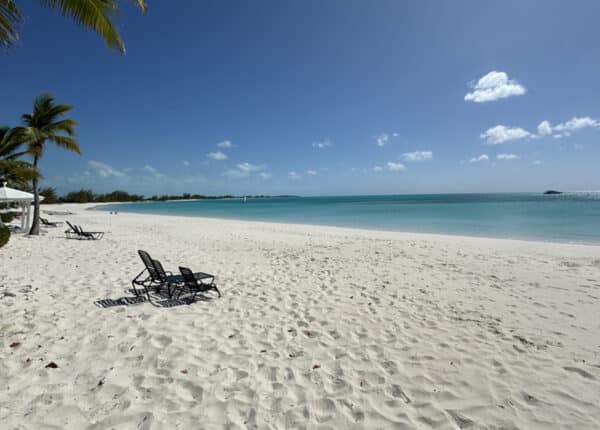How Caribbean Health Impacts Caribbean Economies: Interview with the World Bank
Above: the American University of Antigua School of Nursing
By Alexander Britell
Last month, the World Bank released a report about the way the growing problem of non-communicable diseases in the Caribbean is affecting the region’s economies. Chronic illnesses like heart disease, diabetes and obesity are the leading causes of death in the region, and are beginning to put a significant strain on governments and businesses. To learn more, Caribbean Journal talked to Shiyan Chao, senior health economist for the World Bank in the Latin America and Caribbean region, about the problem of NCDs, their impact on the regional economy and ways to find a solution.
How much of a problem are non-communicable diseases (NCDs) in the Caribbean?
I started working in the Caribbean almost three years ago. I was mainly working on HIV/AIDS issues, but once we got to the Caribbean, we realized that NCDs, especially diabetes and hypertension are major issues in the region. In 2007, all the Heads of Government in the Caribbean came together in Port of Spain to discuss and formulate regional efforts to combat NCDs, and the Caribbean region was very aware of this growing issue. In almost every country we work in, you can see that the prevalence rate of NCDs has been increasing, and that the countries more and more feel the economic pressure of dealing with this in their health systems. We traveled to a lot of different countries, and talked to administrators of hospitals, Ministers of Health, and even Finance Ministers, and we could see the increasing economic burden caused by NCDs. It’s a major epidemic in the whole world, but the Caribbean specifically has been hit very hard by NCDs.
What are the major causes of this epidemic within the Caribbean?
Some of the studies have shown that there are some key risk factors for NCDs – unhealthy diet, lack of physical exercise, smoking, and alcohol abuse. So these are the very common risk factors which, globally, are almost the same. But I can see that in the Caribbean this has been affecting people more, and I was shocked to see women with really high obesity rates, which has really increased their chances of getting heart disease and diabetes. Part of that is diet. Earlier, the Caribbean population used to eat lots of fruits and vegetables, but after modernization and urbanization, people are now consuming fast food and walking less. That’s impacted people’s lives and women in particular. It’s very shocking – not only in Jamaica, but in most of the countries in the Eastern Caribbean, the majority of adult women are either overweight or obese.
What did that study focus on?
Our studies focused on Jamaica and the Eastern Caribbean. After the Port of Spain declaration, CARICOM requested that the World Bank support them in addressing the NCD issues. Originally, we wanted to do a study on the whole region. But we found that the data was not easy to access – not anecdotally, but if you wanted to look at the records, they’re not compiled in a very easy way to do a regional study. So we decided to focus on a few countries. But I think the trend is general for the whole Caribbean – overall, Caribbean countries are all being affected by NCDs.
How does this problem affect Caribbean economies?
Treating people with chronic diseases puts a lot of pressure on the health systems. For example, with diabetes, if you don’t treat it early, people become disabled and they lose their productivity. And if you treat them, people are on dialysis, which is very costly for the country. Some people in the region who are better off go abroad for treatment, so that puts a pressure on the expenditure point of view. At this time, when the Caribbean is affected by the global financial crisis, along with many other countries, their revenues and their resources for health are being reduced. There’s more pressure on the health sector to do more with less, so it’s very difficult for the country to provide adequate treatment.
How can this be remedied?
One way has to do with prevention — if you can get people to exercise, and eat healthier, it doesn’t cost that much, but it will have a huge impact and reduce the cost of treatment. But it’s easy to say “go exercise, or eat well,” but in reality, it is difficult to do. For a lot of people, especially poor people, healthy food actually costs more, so people tend to eat fast food.
Is there anything on the islands that raises the incidence of NCDs?
I don’t think it’s particularly on the islands – because it’s increasingly a global trend. If you look at the United States, 63 percent of the adult population is overweight or obese, a consequence of modernization and industrialization that’s affecting people’s lifestyles. In the past decade, people’s lifestyles and eating habits have changed a lot. On this issue, I’m not sure if there’s any generic impact in the Caribbean that some people are more prone to get heart disease, but I think the risk factors do come from the lifestyle. I think in the Caribbean, people do use alcohol more, and people are smoking at younger ages, and that’s worrisome.
What is the World Bank doing in this regard?
When we started, we wanted to understand a little more about NCDs as in the past the World Bank had been really assisting the Caribbean on the HIV/AIDS side as the second-most-affected HIV region in the world, after Africa.
Right now we’re trying to leverage our global expertise and do much more on the technical aspects of NCDs to help countries develop NCD strategies and programs at the regional level in terms of better understanding and addressing the issue.







